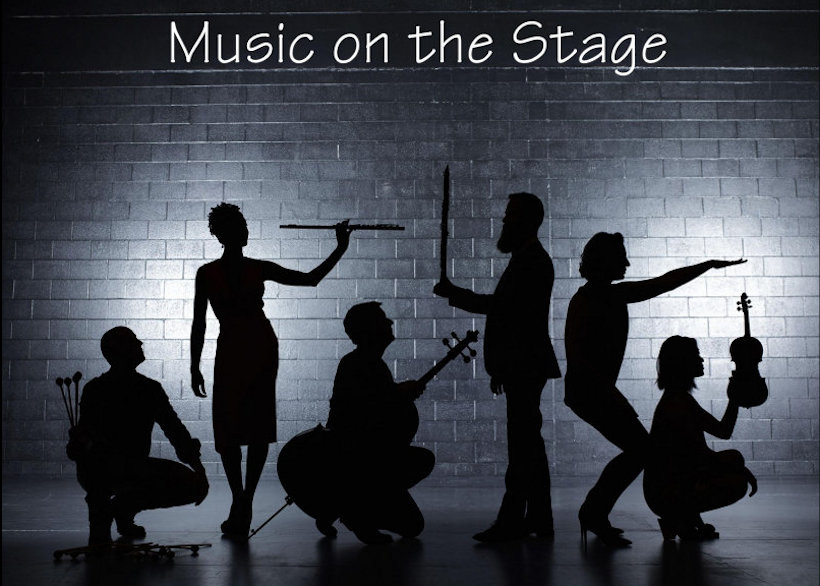11. So Bigger's Better?
The cult of size is generally associated with the Romantic era, beginning with the vast orchestras of Berlioz and Wagner
and reaching a peak with works by lingering 20th-century romantics such as Strauss, Mahler, and their British admirer
Havergal Brian.
The entertainment industry of the later 20th century has seen revival of interest in the blockbuster
spectacle almost as an end in itself. We saw it in classical music with the elaborate opera productions that Franco
Zeffirelli mounted at the Met in the 70s, 80s, and 90s. One goal of these was perhaps to compete with the advent of
mega-musicals by Andrew Lloyd Webber and others, shows whose sheer scale and technical elaboration have made their
successors the longest-running properties on Broadway.
A parallel development can be seen in the evolution of arena rock concerts, which often involve similar technology, and
the international popularity of the Canadian Cirque du Soleil, many of whose creative artists have been hired to
work a similar magic on musical theater and even opera. rb.
The script, videos, and images will be posted immediately after class.
The only clips that cannot be shown exactly as seen in class are the two productions of Turandot. For the
Zeffirelli production at the Met, I have a later moment from the same act that has very much the same effect. For
the Serban production at Covent Garden, I have a television broadcast from 1986 that is complete but quite fails to
show the quality, and also a trailer that is excellent in quality but very brief. Most of the other links are to much
longer clips than I was able to show, although cued to what we saw. Both the Lloyd Webber musicals are available
virtually complete on the Web; the links shown should give access to playlists listing the other items. I did not
upload any of my five animated titles, but do provide links to the music featured in each one. rb.
| LARGE CHORAL WORKS |
| |
Requiems |
|
Mozart
(Leusink, Concertgebouw)
Verdi
(Nézet-Séguin, Met)
Berlioz
(Colin Davis, Royal Albert Hall)
— excerpt used in title
(Gustavo Dudamel, Paris)
|
| |
Brian: Gothic Symphony |
|
Royal Albert Hall, ending
(Martyn Brabbins, Royal Albert Hall)
The Curse of the Gothic Symphony
(Australian film trailer)
|
| |
| OPERA PRODUCTIONS |
| |
Wagner: Die Walküre |
|
Ride of the Valkyries
(Robert Lepage, Met)
Ride of the Valkyries
(David Pountney, Chicago)
Ride of the Valkyries
(composite used in title)
|
| |
Puccini: La bohème |
|
Act II curtain
(Franco Zeffirelli, Met)
|
| |
Puccini: Turandot |
|
Act II, scene 2, Met
(Zeffirelli, later in the same scene)
Act II, scene 2, London
(Serban, in an older inferior video)
— trailer for this production
|
| |
| ARENA CONCERTS |
| |
KISS |
|
Sampler with pyrotechnics
(Dubai; used in title)
|
| |
Cigarettes After Sex |
|
Excerpt shown in class
|
| |
Don Broco |
|
Everybody
|
| |
Lebo M. |
|
"Circle of Life" from The Lion King
(Symphonic spectacular, Budapest)
|
| |
| CIRQUE DU SOLEIL |
| |
Various clips |
|
Amaluna
(clip used in title)
Kurios
(late Victorian era)
Luzia
(butterfly and horse)
|
| |
| ANDREW LLOYD WEBBER |
| |
Cats |
|
Opening
Grizzabella the Glamour Cat
— "Memory"
(Elaine Page)
Rum Tum Tugger
(John Partridge)
|
| |
Phantom of the Opera |
|
Masquerade scene
(Royal Albert Hall)
|
| |
Interviews |
|
Looking back on his career
(clip used in title)
About the genesis of Cats
|
| |
|
|
|
|
|
| IMAGES |
The thumbnails below cover the slides shown in class, though
there may be a few small discrepancies. Click the thumbnail to see a larger image.
Click on the right
or left of the larger picture to go forward or back, or outside it to close. |
 | |
 | |
 | |
 | |
 | |
 | |
 | |
 | |
 | |
 | |
 | |
 | |
 | |
 | |
 | |
 | |
 | |
 | |
 | |
 | |
 | |
 | |
 | |
 | |
Here are brief bios of the major artists, composers, and writers considered in the class, in order of birth.
 |
Wolfgang Amadeus Mozart, 1756–91. Austrian composer.
A child prodigy as both performer and composer, Mozart produced an extraordinary body of work in all genres over a relatively short life. He wrote the greatest of his many operas after moving to Vienna: three collaborations with Lorenzo da Ponte—The Marriage of Figaro (1786), Don Giovanni (1787), and Così fan tutte (1790)—framed by two German Singspiels: The Abduction from the Seraglio (1782) and The Magic Flute (1791).
|
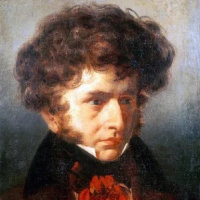 |
Hector Berlioz, 1803–69. French composer, conductor, and critic.
The leading French composer of the Romantic era, Berlioz was a master of orchestration and dramatic effect. A fervent admirer of Shakespeare (and a Shakespearean actress, Harriet Smithson), his works often have a strong literary quality that can obscure their musical craftsmanship. He was unable to get a full performance of his operatic masterpice, The Trojans (1863), but it has come into its own in recent years.
|
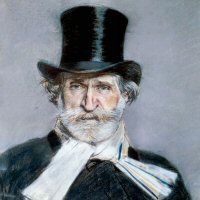 |
Giuseppe Verdi, 1813–1901. Italian opera composer.
Verdi's two dozen or more operas (depending on how you count them) make him the leading Italian opera composer of his time and among the two or three greatest opera composers ever. After what he called his "years in the galleys," he hit his stride in the early 1850s with the trio of Rigoletto, Il Trovatore, and La Traviata. He intended Aïda (1870) to be his last work, but was persuaded out of retirement to write his final Shakespearean masterpieces: Otello (1886) and Falstaff (1893).
|
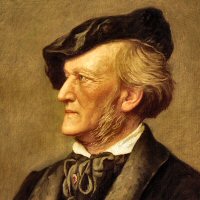 |
Richard Wagner, 1813–83. German opera composer.
Wagner almost single-handedly transformed the nature not only of opera but also of harmony and orchestration. His 10 mature operas include Tristan und Isolde (1865), Die Meistersinger von Nürnberg (1868), and the vast tetralogy Der Ring des Nibelungen (completed 1876), for which he had a special theater built at Bayreuth. His final opera, Parsifal (1882), was written for exclusive performance at that theater.
|
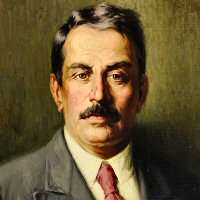 |
Giacomo Puccini, 1858–1924. Italian composer.
Puccini took up the mantle of Verdi as the dominant opera composer of the late 19th century, and developed an international popularity that is unrivaled to this day. His principal works include: Manon Lescaut (1893), La bohème (1896), Tosca (1900), Madama Butterfly (1904), and the unfinished Turandot (1926).
|
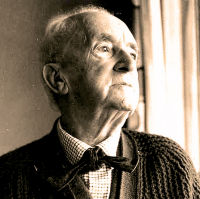 |
Havergal Brian, 1876–1972. English composer.
Largely self-taught as a composer, Brian was a great admirer of the late-Romantics Mahler and Strauss, and emulated their scale and style in a series of 32 symphonies, mostly written after he had turned 70. The first of these, his Gothic Symphony (1932), calls for the largest forces of any orchestral-choral work of all time.
|
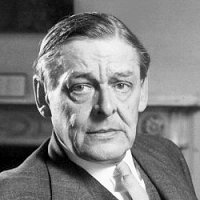 |
Thoman Stearns (T.S.) Eliot, 1888–1965. American-British poet.
One of the leading modernist poets of the 20th century, known for works such as The Waste Land (1922) and Four Quartets (1936–42), Eliot also found success in the theatre with works such as Murder in the Cathedral (1935). His light verse collection Old Possum's Book of Practical Cats (1939) was the source for Andrew Lloyd Webber's Cats.
|
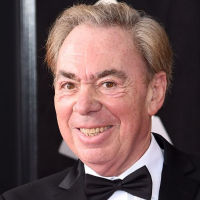 |
Andrew Lloyd Webber, 1948– . English composer.
Baron Lloyd-Webber is credited with reinvigorating the stage musical with a series of hits that include Jesus Christ Superstar (1970), Evita (1976), Cats (1981), and The Phantom of the Opera (1986). He has also written a certain amount of non-theatrical music, including an anthem for the coronation of King Charles III.
|
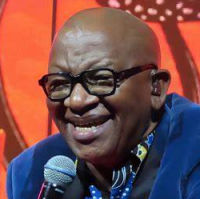 |
Lebohang Morake, 1964– . South African songwiter.
Known professionally as LEBO M, Morake was brought to Hollywood in 2018 to write the African songs in The Lion King, and continued to work on its various spinoffs and other Disney movies. He has also maintained a performing career as a singer.
|
